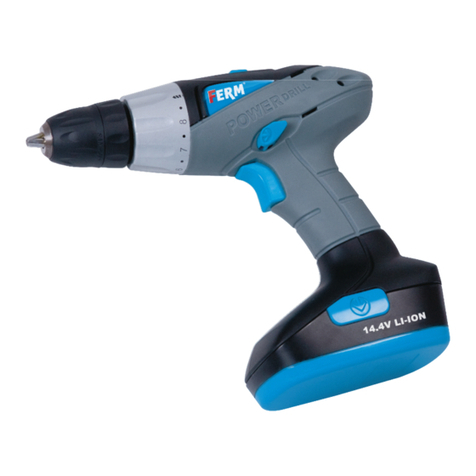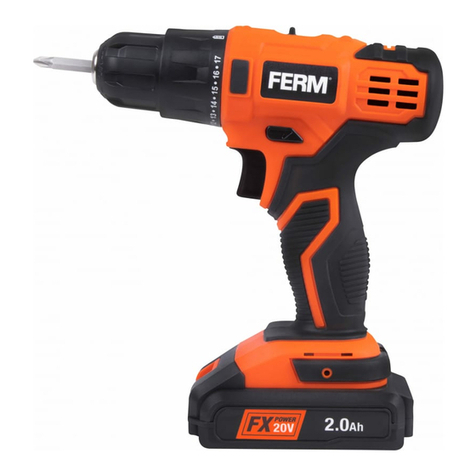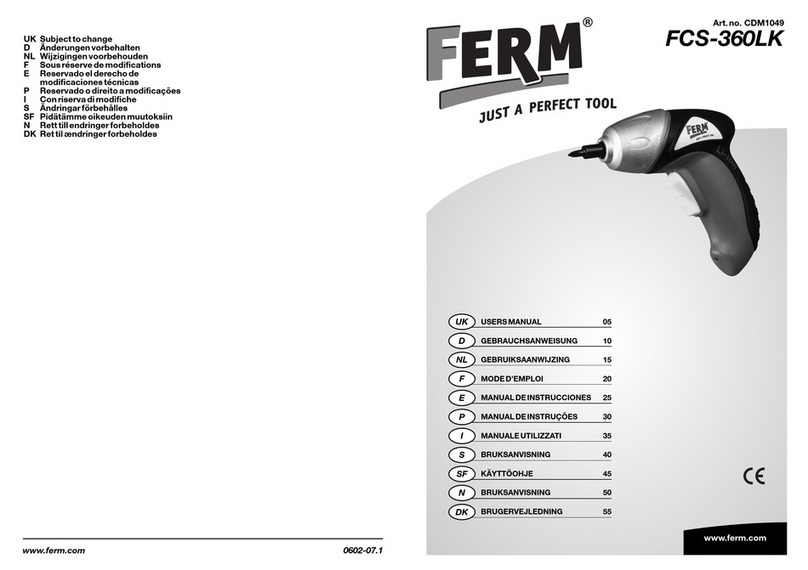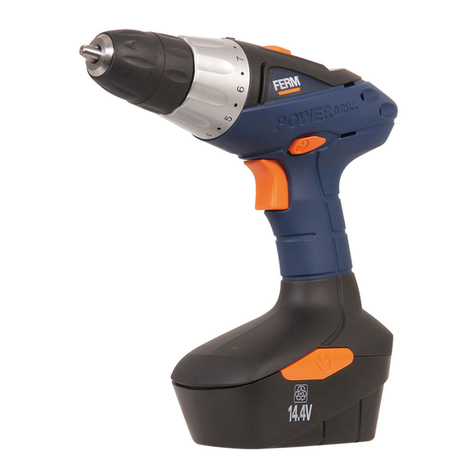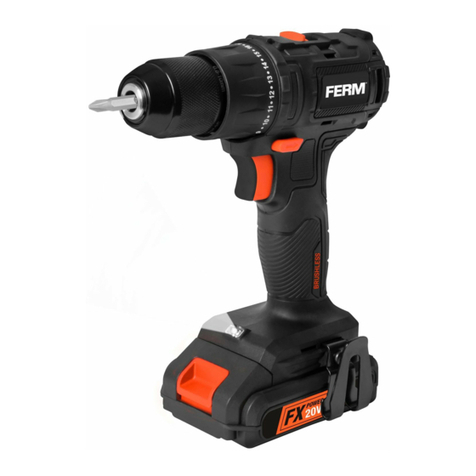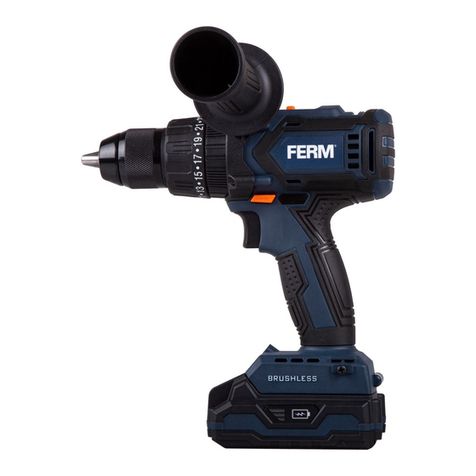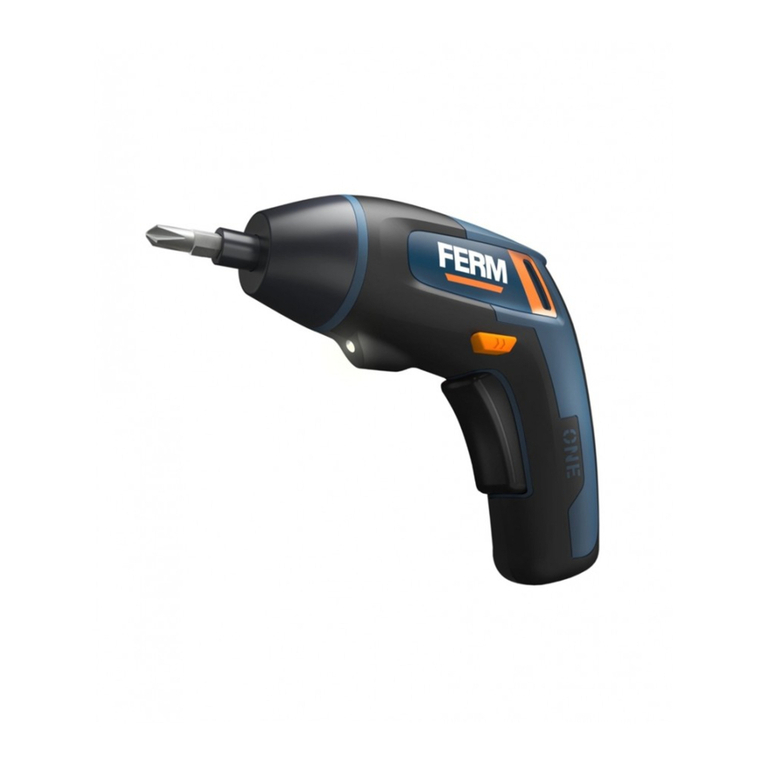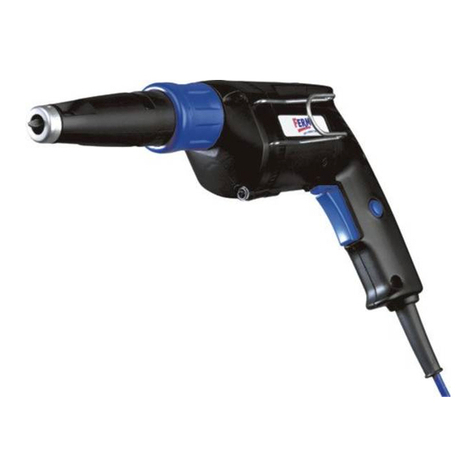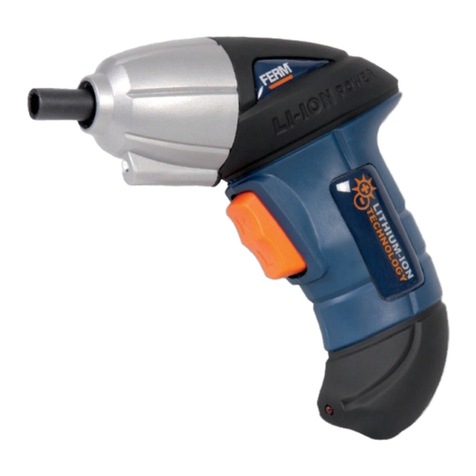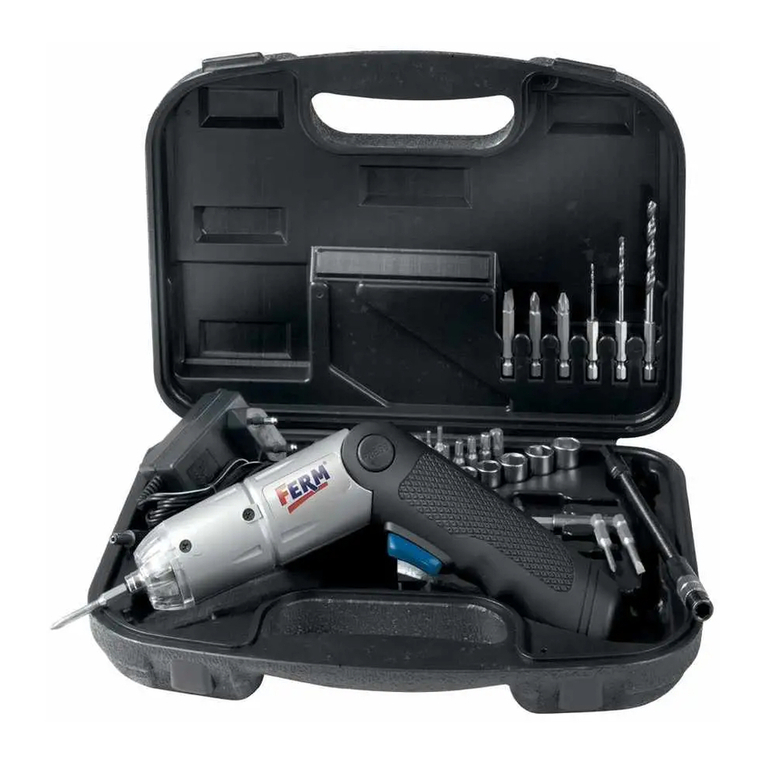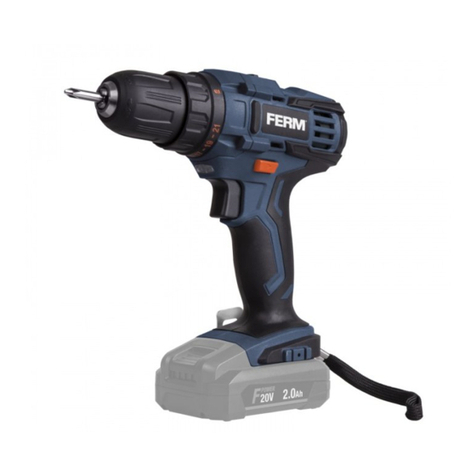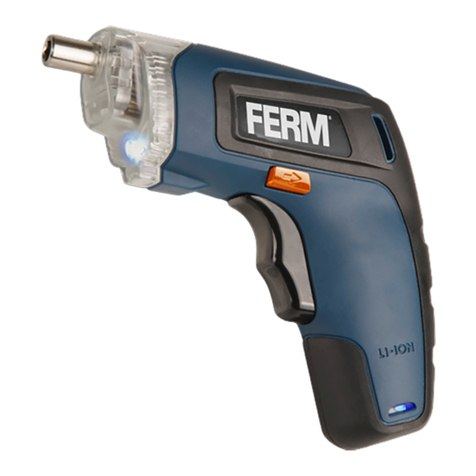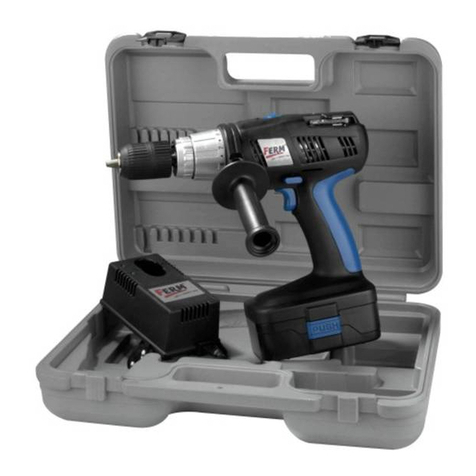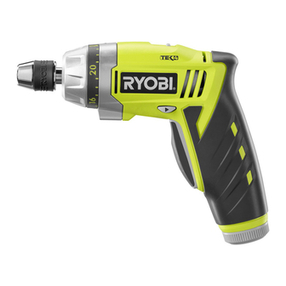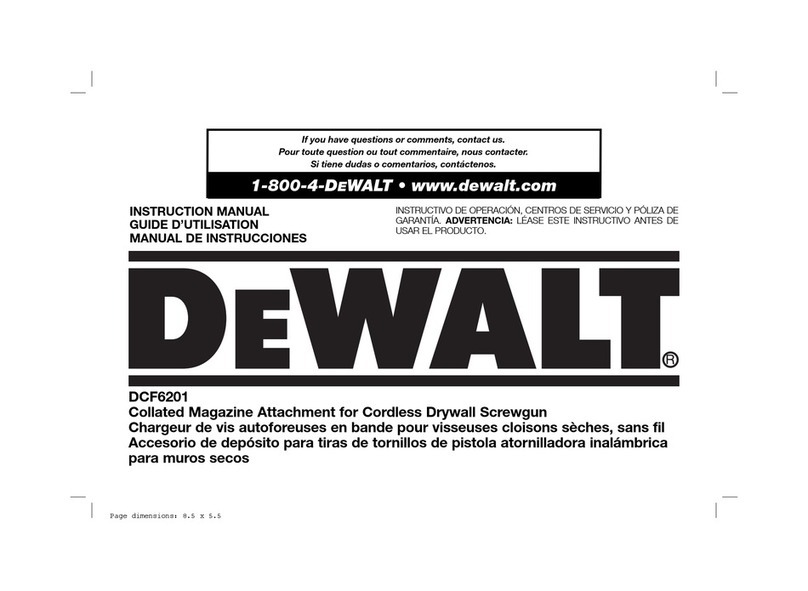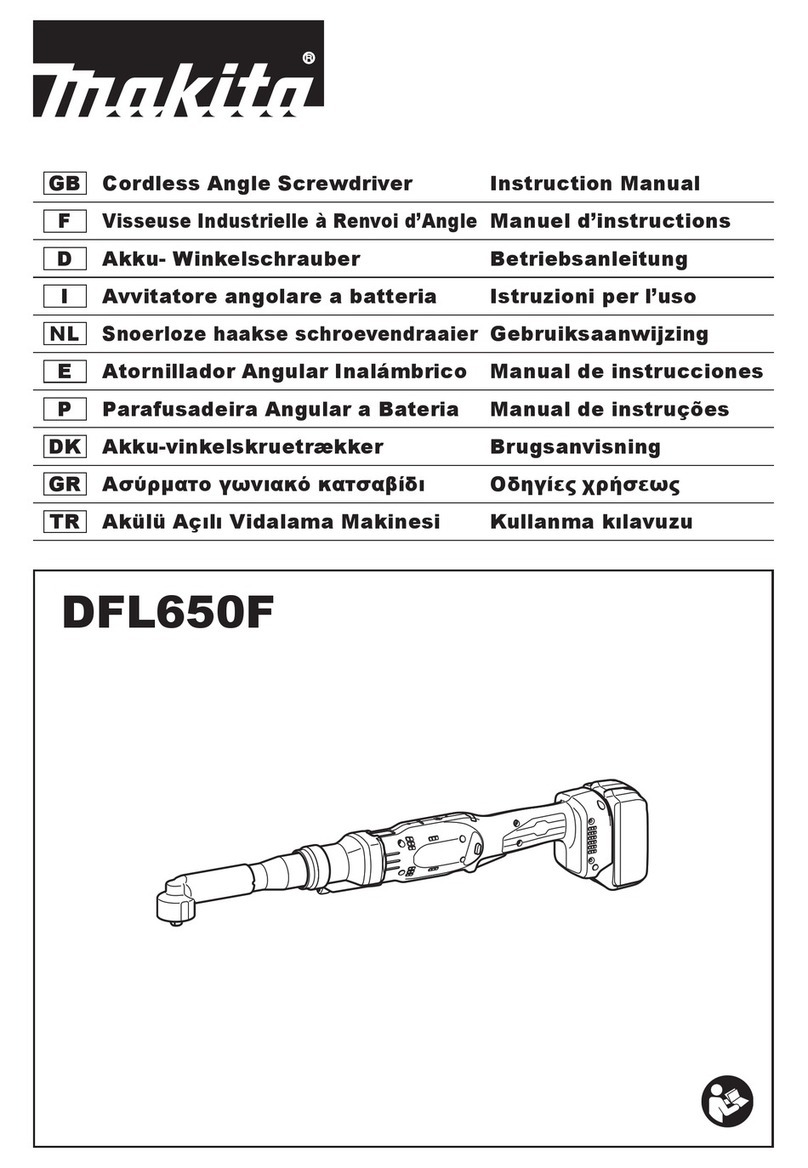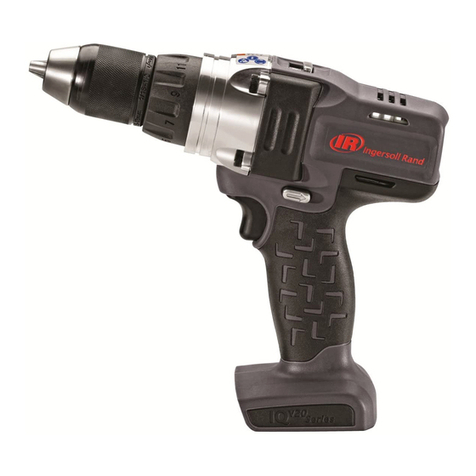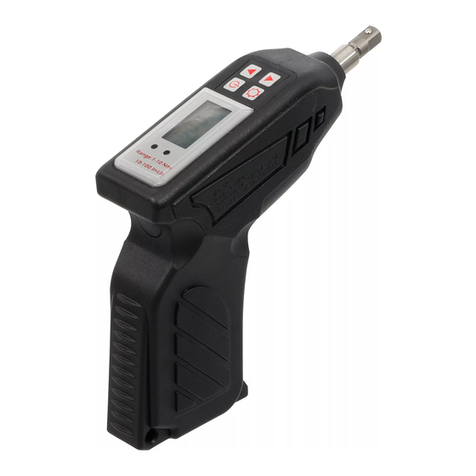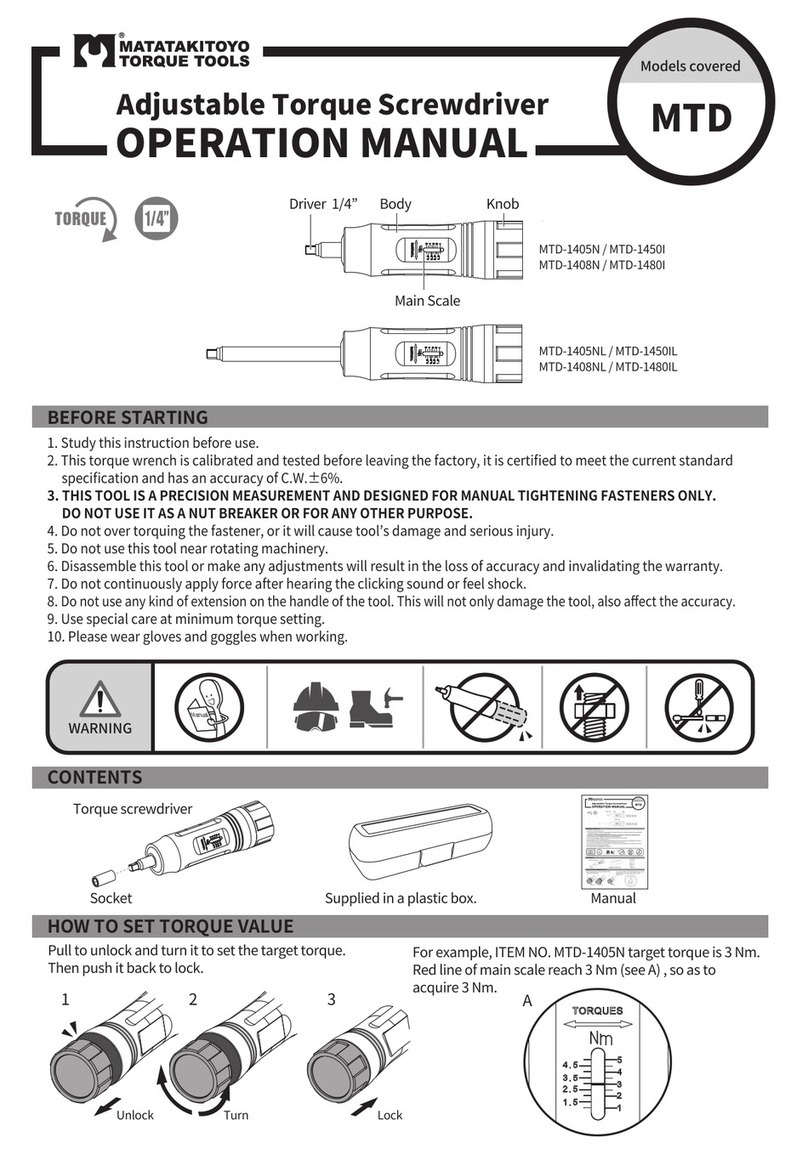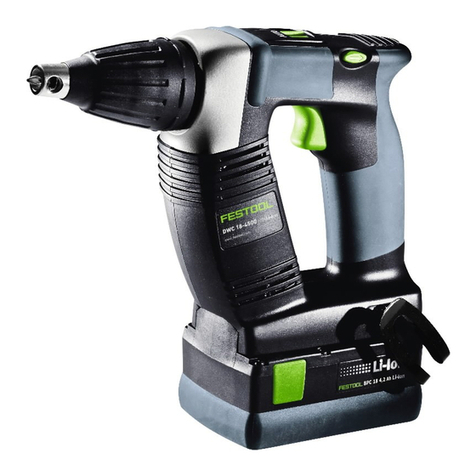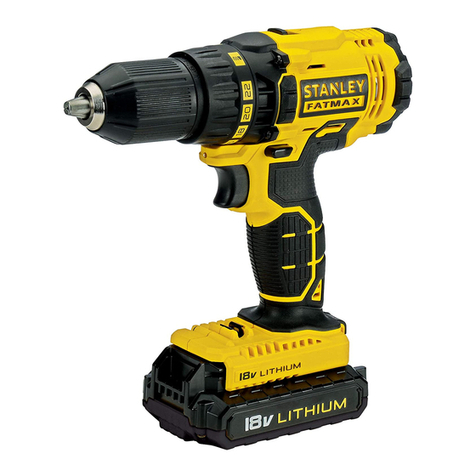
DE
10
und denAkkublock die vom Hersteller
geliefert wurden, anderenfalls besteht
Unfallgefahr.
3. Schützen Sie Ladegerät,Akkublock und das
Elektrowerkzeug vor Feuchtigkeit, wie z.B.
Regen oder Schnee.
4. Überprüfen Sie immer vor Benutzung des
Ladegeräts den korrektenAnschluß aller
Kabel.
5. Wenn Sie Beschädigungen an Kabeln
feststellen, dürfen Sie das Ladegerät nicht
mehr benutzen. Lassen Sie das beschädigte
Kabel sofort auswechseln.
6. Wenn Sie das Ladegerät nicht benutzen, muß
der Netzstecker aus der Kontaktdose
gezogen sein. Ziehen Sie den Netzstecker
nicht am Netzkabel.
7. Sollte das Ladegerät herunterfallen oder
anderweitig starker mechanischer
Beanspruchung ausgesetzt sein, lassen Sie
es vor weiterer Benutzung erst von
einer anerkannten Fachwerkstatt auf
Beschädigung untersuchen. Beschädigte
Teile müssen repariert werden.
8. Behandeln Sie denAkkublock mit Umsicht,
lassen Sie ihn nicht fallen, oder schlagen Sie
ihn nicht an.
9. Versuchen Sie niemals das Ladegerät oder
denAkkublock selbst zu reparieren.
Reparaturen mussen immer von einer
anerkannten Fachwerkstatt durchgeführt
werden, andernfalls besteht Unfallgefahr.
10. Ziehen Sie vor Reinigung oder Wartung von
Ladegerät oderAkkublock immer den
Netzstecker aus der Steckdose des
Ladegeräts.
11. Laden Sie nie denAkkublock, wenn die
Umgebungstemperatur unterhalb 5 °C oder
oberhalb 40 °C liegt.
12. Die Lüftungsöffnungen des Ladegeräts
müssen immer frei sein.
13. DerAkkublock darf nicht kurzgeschlossen
werden.
Bei einem Kurzschluß fließt Strom mit
hoher Stromstärke. Überhitzung,
Brandgefahr oder Platzen des
Akkublocks können die Folge sein. Dies
kann zu Beschädigung des Akkublocks
bzw. Unfallgefahr für den Benutzer
führen.
Deshalb:
Schließen Sie keine Kabel an die Polen
desAkkublocks an.
Achten Sie darauf, daß sich keine Metall-
gegenstände (Nägel, Büroklammern,
Münzen etc.) in derAkkublock-aufnahme
befinden.
Setzen Sie demAkkublock nicht Wasser
oder Regen aus.
Verwenden Sie den mitgeliefertem
Akkublock ausschließlich in kombination
mit diesemAkku-Bohrschrauber um
Fehler und/oder Risiko zu vermeiden.
14. Ein beschädigter oder nicht mehr ladbarer
Akkublock muß als Sondermüll entsorgt
werden. Werfen Sie ihn nicht in den Hausmüll.
15. Werfen Sie denAkkublock niemals ins Feuer
oder Wasser. Es besteht Explosionsgefahr!
Elektrische Sicherheit
Überprüfen Sie stets, ob die Spannung
auf dem Akkusatz mit der auf dem
Leistungsschild genannten Spannung
übereinstimmt. Überprüfen Sie auch, ob
Ihre Netzspannung mit der Eingangs-
spannung des Akkuladegeräts
übereinstimmt.
Gerät der SchutzklasseII -
schutzisoliert - kein Schutzkontakt
erforderlich.
Austauschen von Kabeln oder Steckern
Wenn dieAnschlussleitung beschädigt wird, muss
sie durch eine besondereAnschlussleitung
ersetzt werden, die vom Hersteller oder seinem
Kundendienst erhaltlich ist. Entsorgen Sie alte
Kabeln oder Stecker, unmittelbar nachdem Sie
durch neue ersetzt sind.
Nehmen Sie denAkkublock ab. Bei
Nichtgebrauch des Elektrowerkzeugs, vor der
Wartung und beim Wechsel von Werkzeugen
wie z.B. Spannfutter, Bohrer.
Das Gerät ist zum Schrauben und Bohren
geeignet.Alle anderenAnwendungen werden
ausdrücklich ausgeschlossen.
0RQWDJHGHV=XEHK|UV
Entfernen Sie vor Anbringung eines
Zubehörteils stets die Akku.


